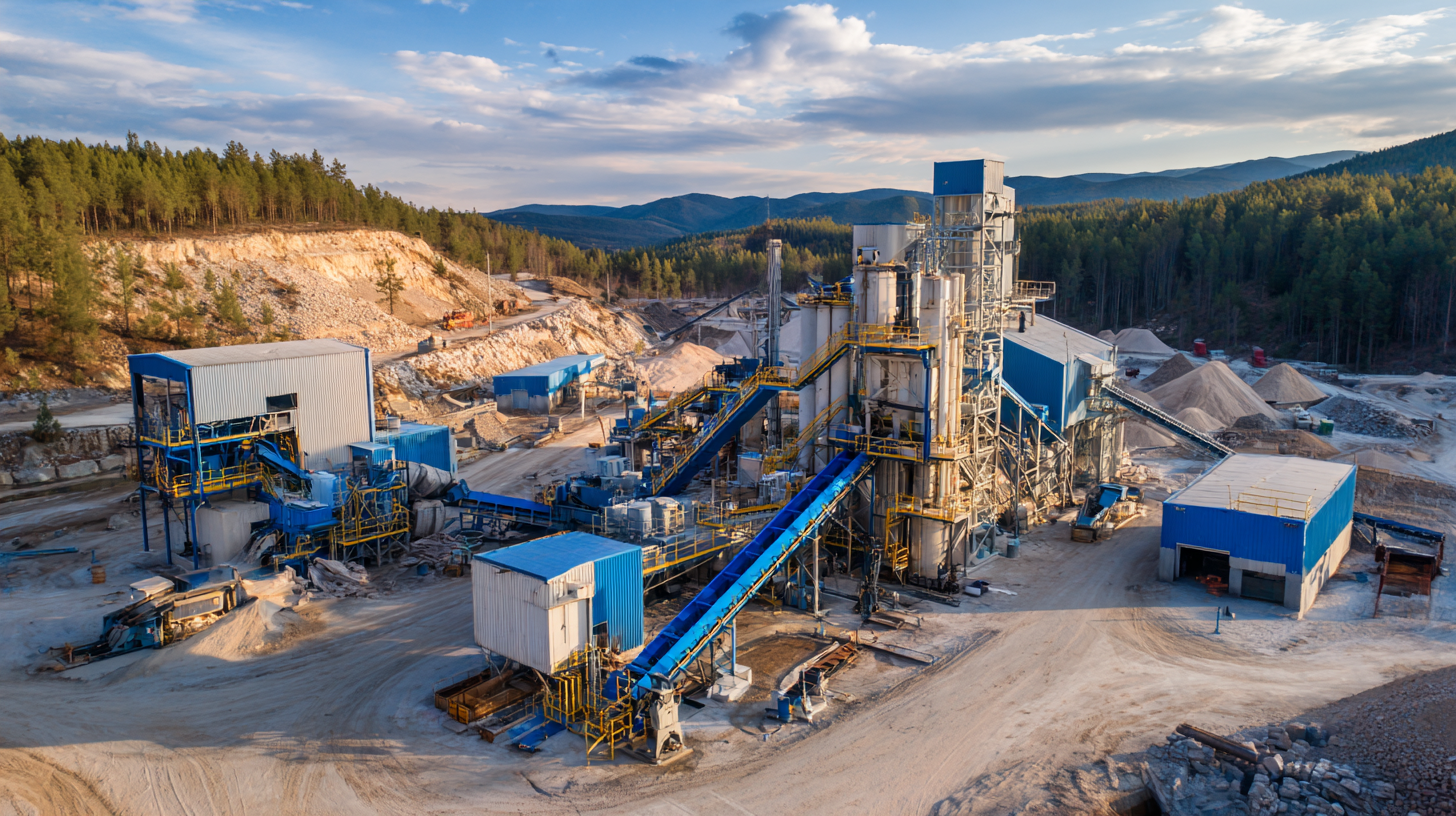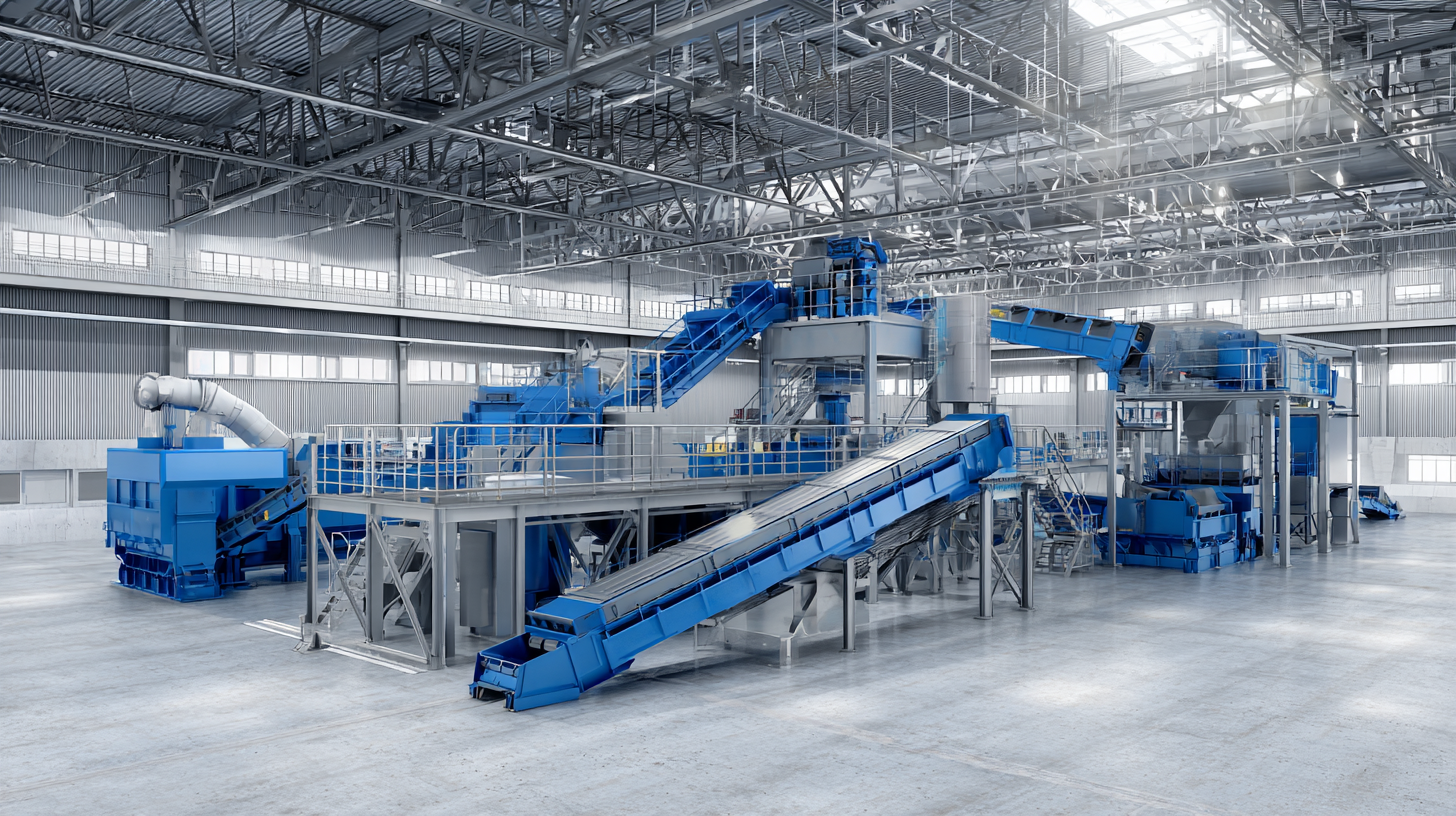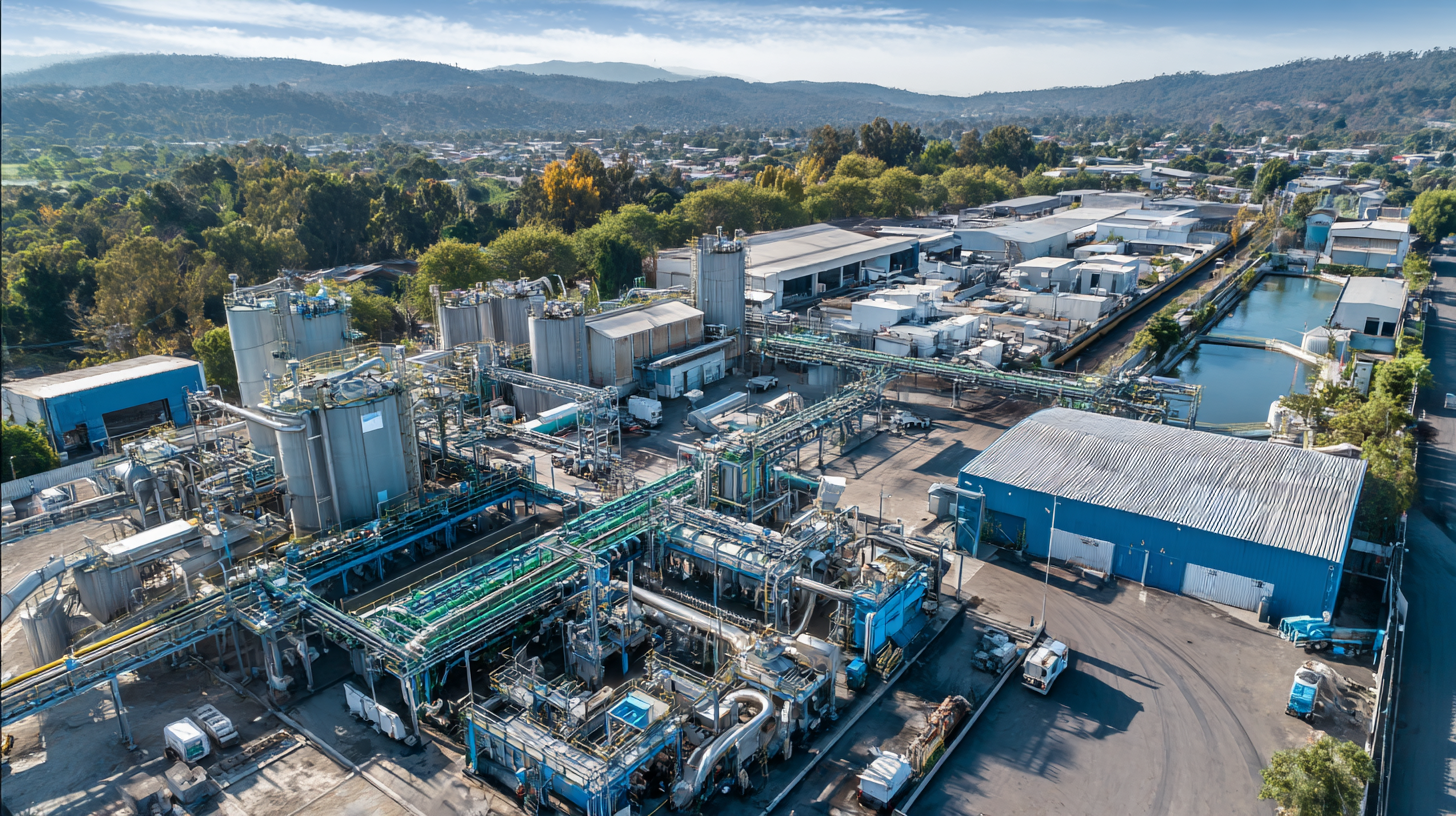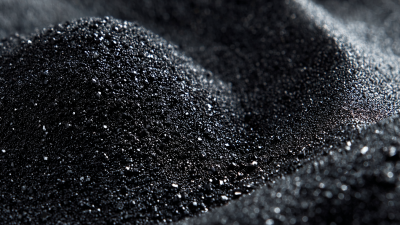

You know, as industries keep pushing to become more efficient and cut costs, innovative solutions like Lime Sludge Dewatering are really starting to stand out—and especially in sectors like oil and gas. I’ve seen reports saying that the worldwide market for sludge dewatering equipment is set to grow pretty significantly, mainly because there's a big push for more sustainable waste management practices these days. Shanghai Shangjiang Petroleum Engineering Equipment Co., Ltd. has been really leading the charge on this front, constantly working on advanced separation and filtration tools that are specifically designed to tackle the unique challenges in oil and gas operations. When companies adopt Lime Sludge Dewatering, they can cut down on waste volume and even recover some valuable resources, which really helps boost overall efficiency.

In this blog, I want to dive into all the different benefits of Lime Sludge Dewatering—showing how it plays a key role in saving costs and promoting better environmental practices in the industry.
Lime sludge dewatering techniques are honestly a game-changer when it comes to making waste management a bit more manageable across different industries. Basically, by efficiently pulling water out of lime sludge—stuff that's leftover from processes like papermaking—factories can cut down on the amount of waste they generate and even recover some useful resources. For example, throwing lime sludge into Portland cement production not only helps with sustainability goals but also cuts down on landfill use. That’s a win for the environment and keeps things more circular within the construction world.
Plus, tech keeps evolving, and now we have some pretty cool new methods to make sludge easier to dewater. Using organic polymer flocculants, for instance, has shown some pretty promising results—making the separation process more efficient and reducing dependence on older-school dewatering agents like ferric trichloride and lime. As industries get more serious about eco-friendly practices, these lime sludge dewatering methods don’t just save money—they also support global efforts for sustainability through recycling and responsible waste management. It’s a nice little win-win all around.
You know, when it comes to implementing lime sludge dewatering in industrial setups, there are some pretty solid economic perks that can really boost your efficiency and save you a ton of money. Basically, by cutting down the amount of waste you produce, you can lower disposal costs and do a better job at staying sustainable in your operations. Dewatering that lime sludge isn't just about saving cash on transportation and landfill fees — it also helps you run a cleaner, more compliant operation, which means fewer fines and less hassle with environmental regs.

A good tip? Look into investing in some cutting-edge dewatering tech that's tailored to what your specific industry needs. These smarter solutions can crank up water recovery and make your solid waste more concentrated, giving you a nice bump in productivity.
And here's another thing — reusing dewatered lime sludge in construction or farming can actually bring in extra cash. When you repurpose waste like this, you're not only cutting down on raw material costs but also opening up new revenue streams. Plus, it’s a win for the environment and your bottom line, creating a little more balance in your waste cycle.
A tip for that? Talk to industry pros who really know their stuff. They can help you review your current sludge handling practices and find ways to make the dewatering process work even better for you. Sometimes just a little expert advice can lead to innovative ideas that boost your profitability and make your operations smoother.
Lime sludge dewatering really is a key step when it comes to getting the most out of resources in different industrial settings. When you remove excess water from lime sludge effectively, you’re turning what was once waste into a pretty valuable resource. It not only cuts down on handling and disposal costs, but also helps you recover more of the material — a win-win all around. Plus, this process boosts overall efficiency and plays its part in sustainability goals by reducing the amount of waste headed to landfills.
Here’s a little tip: Make sure to keep an eye on the chemical makeup of that sludge. Tinkering with the lime content and keeping it balanced can really make a difference in how well you can dewater it. This can save you money and improve the flow of operations.
On top of that, using advanced dewatering tech like belt filter presses or centrifuges can help produce a drier, higher-quality cake. This stuff isn’t just waste; it can be used in agriculture — think of it as a nutrient-rich addition to soil.
Another tip: Don’t forget routine maintenance on your dewatering gear. Regular check-ups can prevent unexpected breakdowns, keep things running smoothly, and help your equipment last longer. In the end, it means more consistent results and some nice savings over time.
| Application Area | Dewatering Efficiency (%) | Cost Savings ($/ton) | Resource Recovery Rate (%) | Environmental Impact (Reduction in Landfill Usage) |
|---|---|---|---|---|
| Wastewater Treatment | 85 | 35 | 90 | 50% |
| Pulp and Paper Industry | 80 | 40 | 85 | 45% |
| Mining and Mineral Processing | 90 | 50 | 92 | 60% |
| Agricultural Runoff Treatment | 75 | 30 | 80 | 40% |
| Food Processing Industry | 82 | 38 | 88 | 48% |
Efficient dewatering solutions are pretty much essential these days for industries that want to stay on top of environmental rules while also keeping their operational costs in check. You know, lime sludge— that byproduct from various industrial processes— can be a real pain to deal with because it’s so wet and can cause environmental issues if not handled right. But the good news? By using proper dewatering methods, companies can cut down on the amount of sludge they generate. That means lower disposal costs and less strain on the environment. Plus, it helps businesses stay compliant with regulations and flicks a positive switch on their sustainability efforts.
On top of that, jumping into modern dewatering tech can really change the game when it comes to managing lime sludge. Stuff like belt presses and centrifuges aren’t just fancy gadgets—they help industries recover useful resources and cut down on waste at the same time. It’s a win-win situation: operating more efficiently and showing that a company cares about its ecological footprint. In the end, these upgrades don’t just help with regulation compliance; they also position the business as a leader in eco-friendly practices, paving the way for a cleaner, greener future— and honestly, who wouldn’t want that?
You know, in a bunch of industrial settings, lime sludge dewatering has really become a game-changer. It’s not just about making the process more efficient, but it also helps cut down on costs quite a bit. If you look at different industries, there are plenty of success stories showing how effective good dewatering methods can be. Take the paper industry, for example — some companies have seen their disposal costs drop by up to 30% just by fine-tuning how they handle lime sludge. This kind of shift not only makes their operation more sustainable, but also ensures they're sticking to environmental rules without breaking a sweat.

And here’s a tip: investing in better tech, like belt presses or centrifuges, can really boost how well this works. These tools help produce drier sludge, which means less waste volume to deal with and lower transportation costs—pretty big savings all around.
On the municipal side of things, lime sludge dewatering has really stepped up the game in treatment plants. They’re able to recycle water more efficiently and need fewer chemicals for the process, which is great for the environment and their budgets. It’s a win-win situation that shows how different industries can customize their approach to lime sludge management for the best results.
And one more thing—keeping your equipment in good shape is super important. Regular maintenance and keeping an eye on system performance can prevent those annoying, costly breakdowns. Having a routine check-up schedule helps make sure the whole dewatering process keeps running smoothly, so you get the most out of your lime sludge efforts.
: Lime sludge dewatering helps reduce waste volume, which lowers disposal costs and enhances operational sustainability. It minimizes transportation expenses and landfill fees, leading to more efficient resource allocation.
By effectively reducing sludge volume, lime sludge dewatering helps companies meet environmental regulations, thereby avoiding potential fines and enhancing sustainability efforts.
Advanced dewatering technologies such as belt presses and centrifuges can improve water recovery rates and maximize solid concentration, leading to increased productivity.
Reusing dewatered lime sludge in construction and agriculture can lower raw material costs and create new revenue streams, promoting a circular economy.
Efficient dewatering solutions reduce the volume of lime sludge, facilitating compliance with environmental regulations and contributing to sustainability goals.
In the paper manufacturing sector, companies have achieved up to a 30% reduction in disposal costs through optimized lime sludge management.
Regular maintenance and monitoring prevent costly downtime, ensuring that dewatering processes run smoothly and effectively, maximizing the benefits of lime sludge management.
Collaborating with industry experts can help organizations assess their current practices and identify optimization opportunities in dewatering processes.
Advanced technologies enable industries to recover valuable resources while minimizing waste, which enhances operational efficiency and corporate social responsibility.
By adopting effective lime sludge dewatering techniques, companies can demonstrate commitment to reducing ecological footprints, positioning themselves as leaders in sustainable industrial practices.
The blog titled "Maximizing Efficiency and Cost Savings with Lime Sludge Dewatering Benefits in Industrial Applications" really dives into how Lime Sludge Dewatering plays a crucial part in improving waste management and saving money across different industries. You know, by using effective dewatering methods, companies can recover more resources, cut down on operational costs, and stay on top of environmental regulations. It’s pretty interesting how Lime Sludge Dewatering helps tackle waste disposal issues — basically, industries can reclaim valuable materials while also keeping their ecological impact in check.
Plus, the blog shares some real-world case studies that show how this technology is making a difference in various fields. At Shanghai Shangjiang Petroleum Engineering Equipment Co., Ltd., we’re really passionate about pushing forward with separation and filtration tech. It’s all about supporting smarter, more sustainable practices in the oil and gas world — and we see these advances making a real impact.






